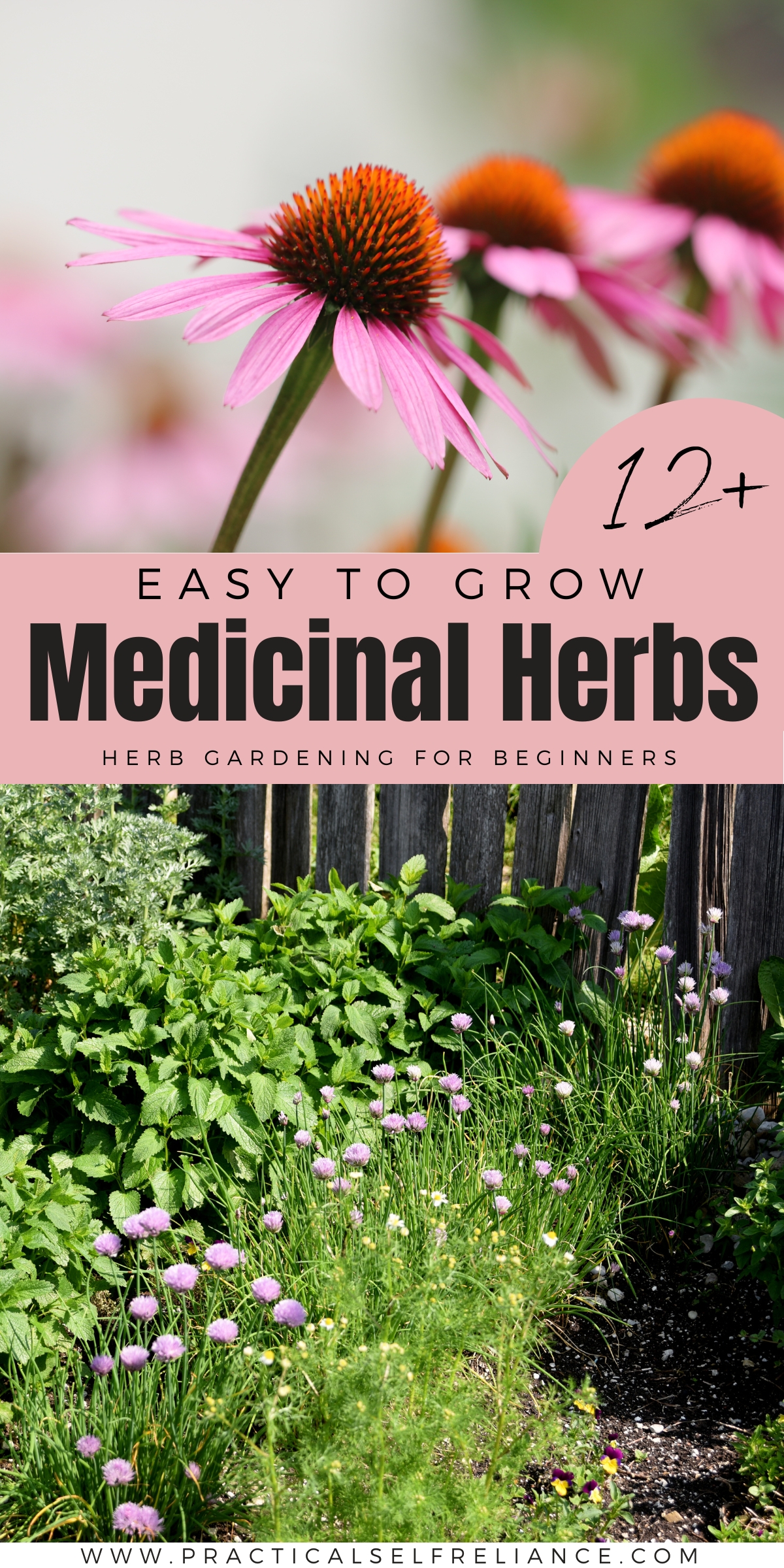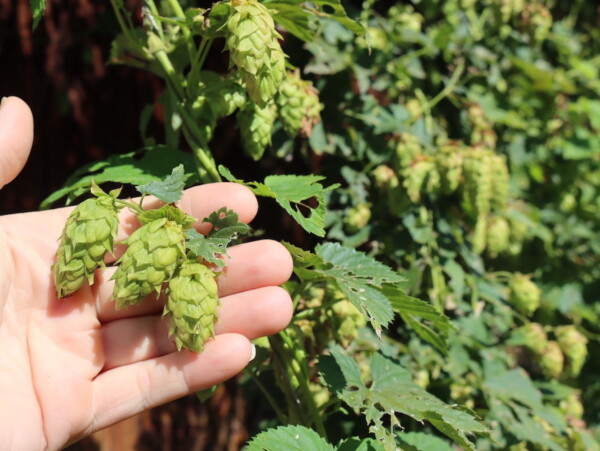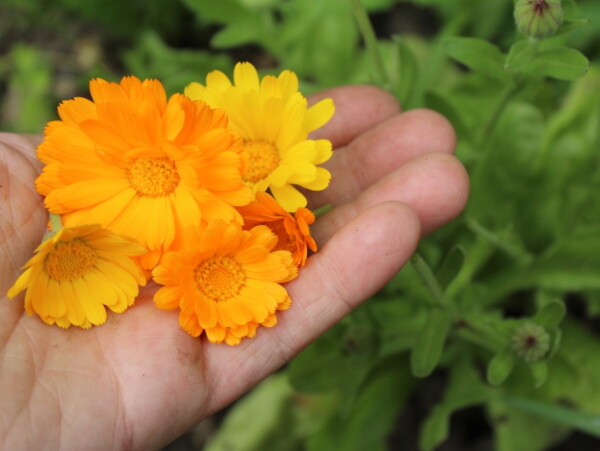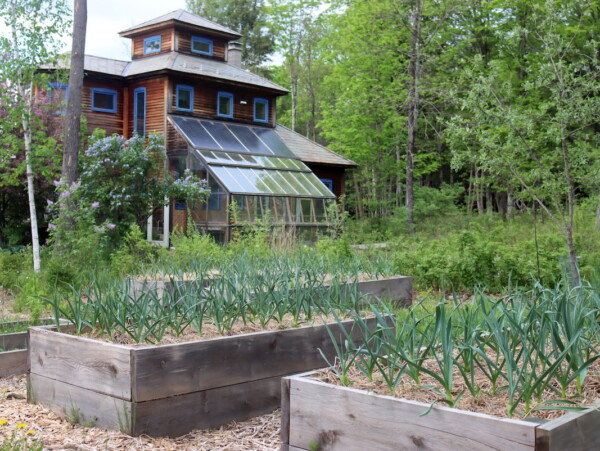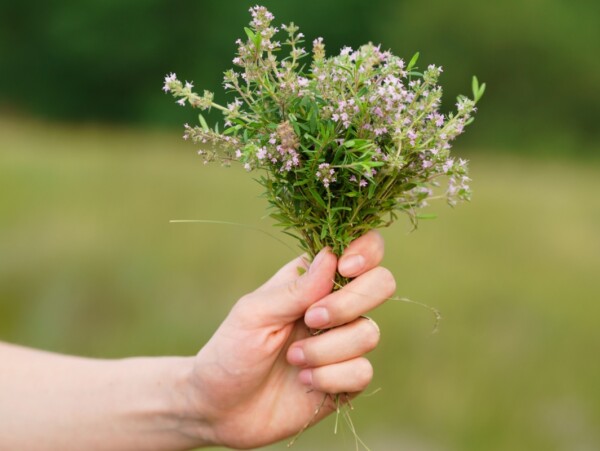Affiliate disclosure: This post may contain affiliate links. Please see our disclosure policy.
Easy-to-grow medicinal herbs are perfect for beginners, and many of these are tasty culinary herbs, too!
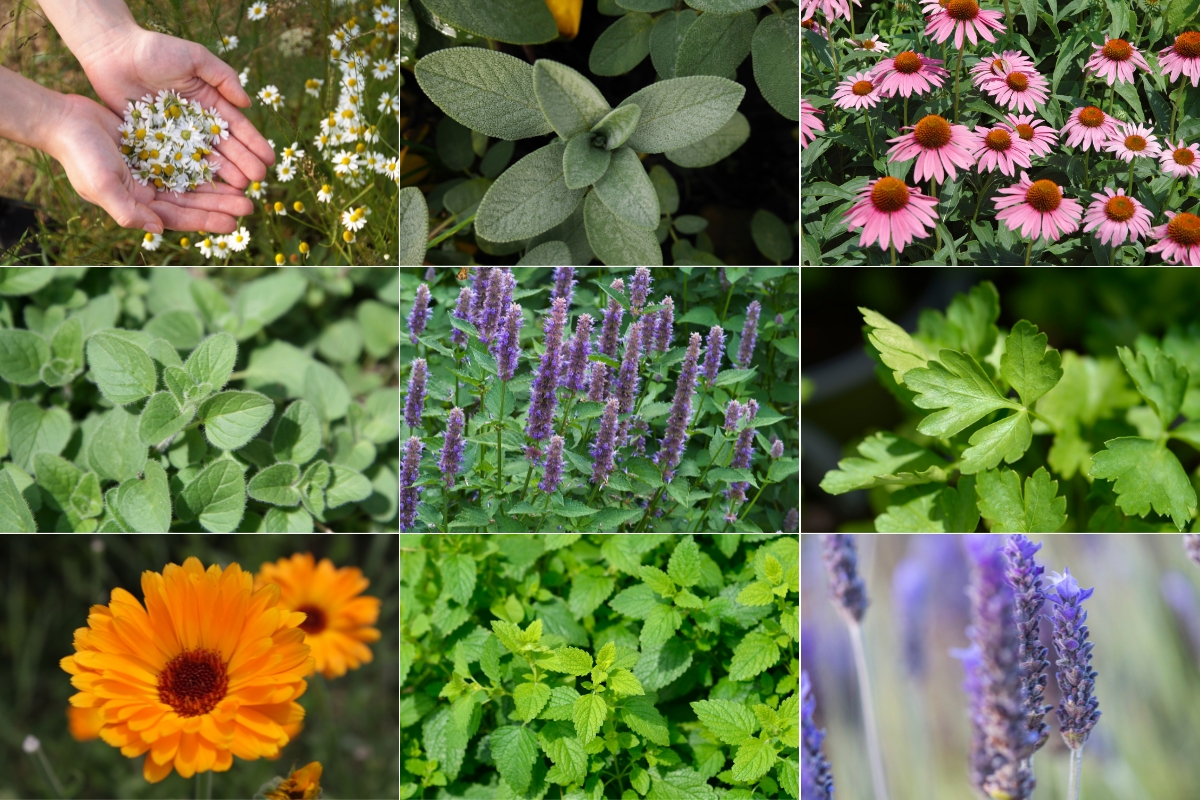
In early American colonial life, families often cultivated small gardens in the semi-enclosed areas between their kitchens and outbuildings, known as “dooryards.” These spaces were multifunctional: they served as places to grow food and herbs, do laundry, chop wood, and carry out other tasks with the shelter of the kitchen, protecting them from the elements.
Though these dooryard gardens have mostly faded from modern homes, the idea can still be brought to life today by creating a designated, protected area for growing herbs. Whether in a backyard garden, on a porch, or a windowsill, having fresh herbs close at hand for cooking or crafting herbal remedies can be both practical and rewarding.
Staring with easy-to-grow herbs, you can cultivate a dual-purpose medicinal and culinary herb garden in a small space just outside your door.
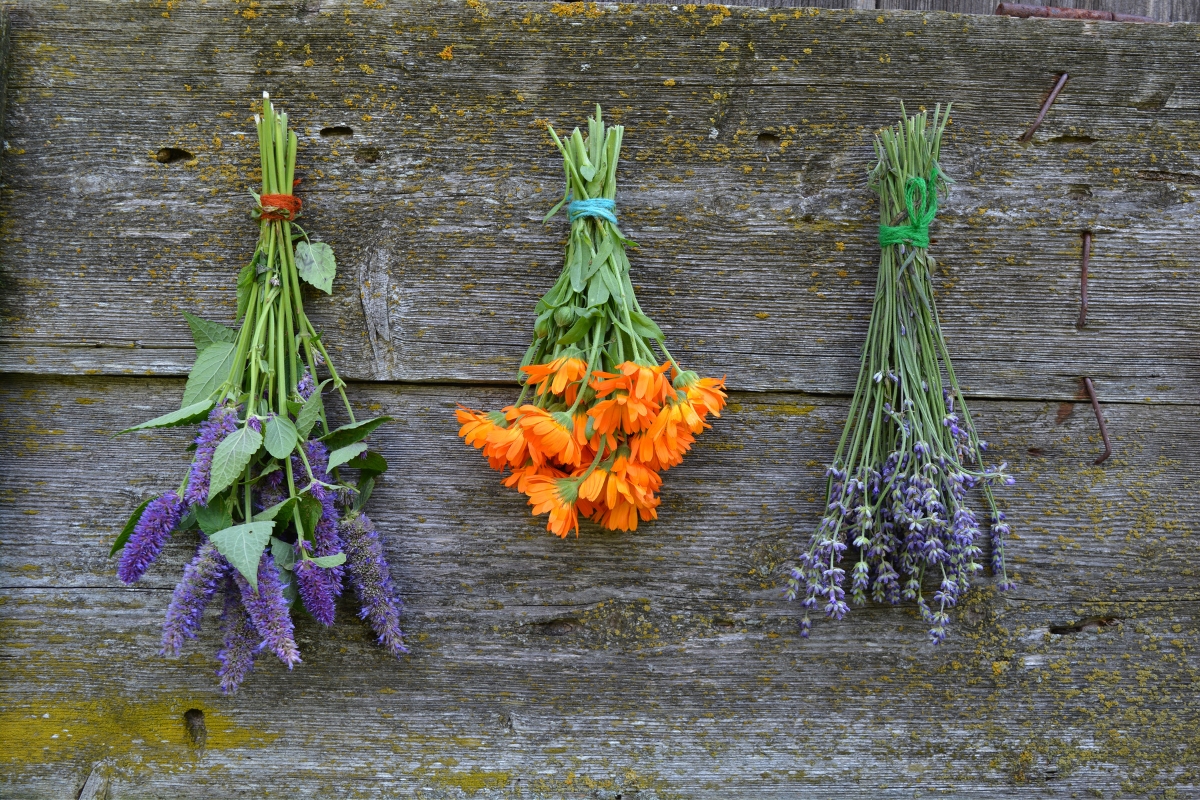
Herbs That Are Easy to Grow
All of these easy-to-grow plants are beneficial medicinal herbs, and many also happen to be delicious culinary herbs!
- Anise Hyssop (Agastache foeniculum)
- Basil (Ocimum basilicum)
- Calendula (Calendula officinalis)
- Chamomile (Matricaria chamomilla)
- Echinacea (Echinacea spp.)
- Lavender (Lavandula spp.)
- Lemon Balm (Melissa officinalis)
- Oregano (Origanum vulgare)
- Parsley (Petroselinum crispum)
- Peppermint (Mentha × piperita)
- Sage (Salvia officinalis)
- Thyme (Thymus vulgaris)
I’ll take you through them, one by one.
Anise Hyssop (Agastache foeniculum)
Anise Hyssop is a hardy perennial herb that can reach up to 3 feet in height. This herb is particularly adaptable, thriving in a wide range of soil types, from well-drained, slightly sandy soil to more fertile, loamy conditions.
It is relatively easy to grow and can tolerate both full sun and partial shade, making it suitable for various garden setups. Its aromatic leaves and flowers attract pollinators, making it a valuable addition to any garden.
Anise Hyssop does not require extensive care once established, and it can be directly-seeded or transplanted from seedlings.
In terms of medicinal uses, Anise Hyssop is often utilized for its soothing properties, particularly for respiratory issues. It can help alleviate coughs, colds, and bronchial congestion. The herb’s gentle antimicrobial properties also make it beneficial for digestive issues like bloating and indigestion.
It is commonly used in teas, tinctures, and syrups, and its leaves can be finely chopped to add a sweet, anise-like flavor to salads and spreads. Anise Hyssop can also be infused in honey or vinegar for additional culinary and medicinal uses.
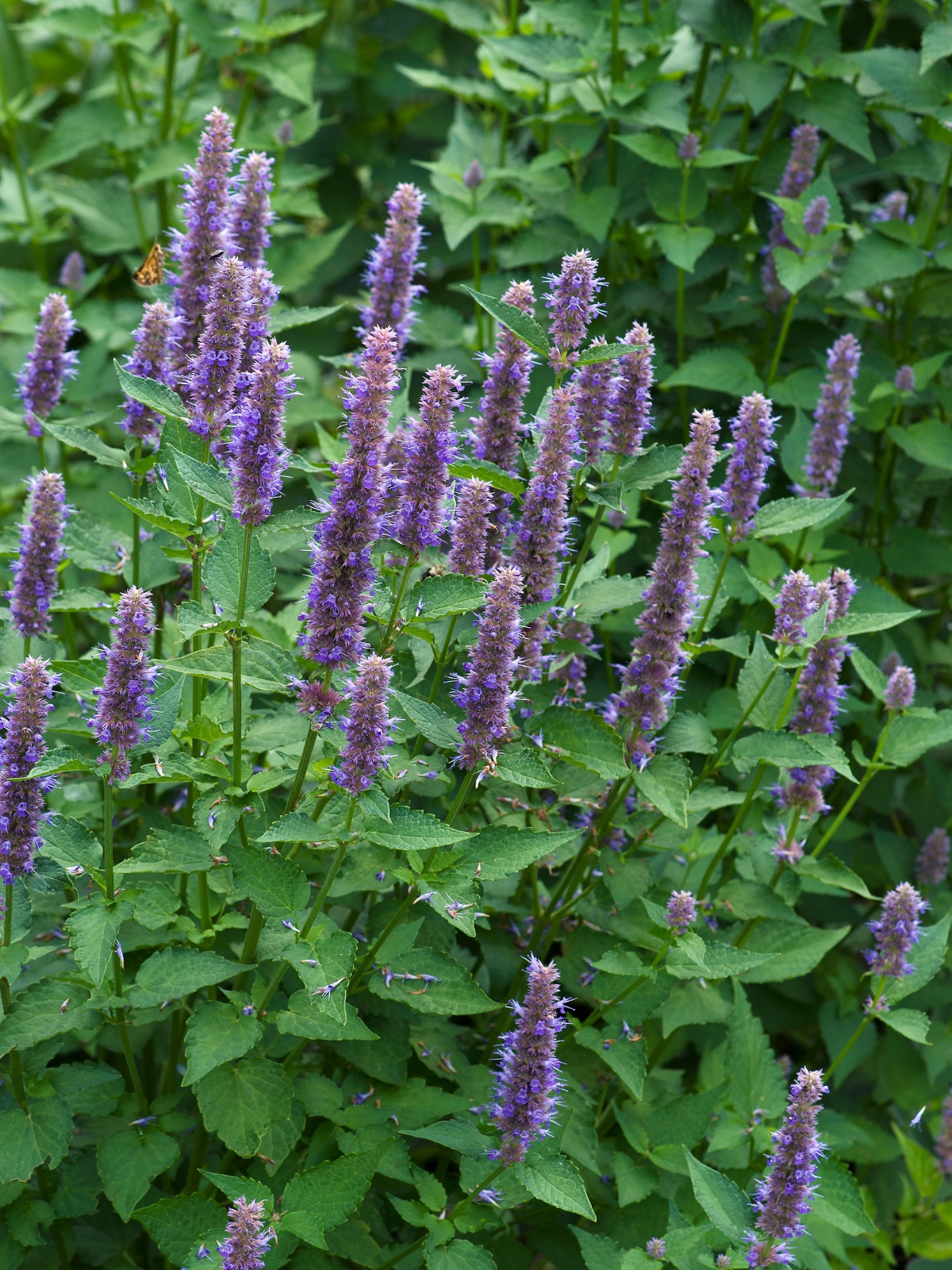
Basil (Ocimum basilicum)
Basil is an annual herb that typically grows to about 15 inches in height and thrives in warm, sunny environments. It prefers rich, well-drained soil and should be planted after the last frost date, as it is sensitive to cold temperatures.
This tasty dual-purpose herb is fast-growing and can be harvested just a couple of weeks after planting. For best results, it should receive at least 6 hours of full sunlight each day.
Basil also grows well in containers or garden beds, where it can spread and form a bushy plant. Regular pruning helps keep the plant compact and encourages fresh, tender growth.
Medicinally, Basil is well-known for its anti-inflammatory and antimicrobial properties. It is often used to support the immune system and is considered a remedy for stress, anxiety, and digestive discomfort.
Basil is commonly prepared as a tea, though it can also be made into a tincture or infused in oil for topical use. Its leaves are frequently used fresh in culinary dishes, especially in Italian and Mediterranean cuisines, and can be dried for later use in oils, vinegars, or honey infusions.
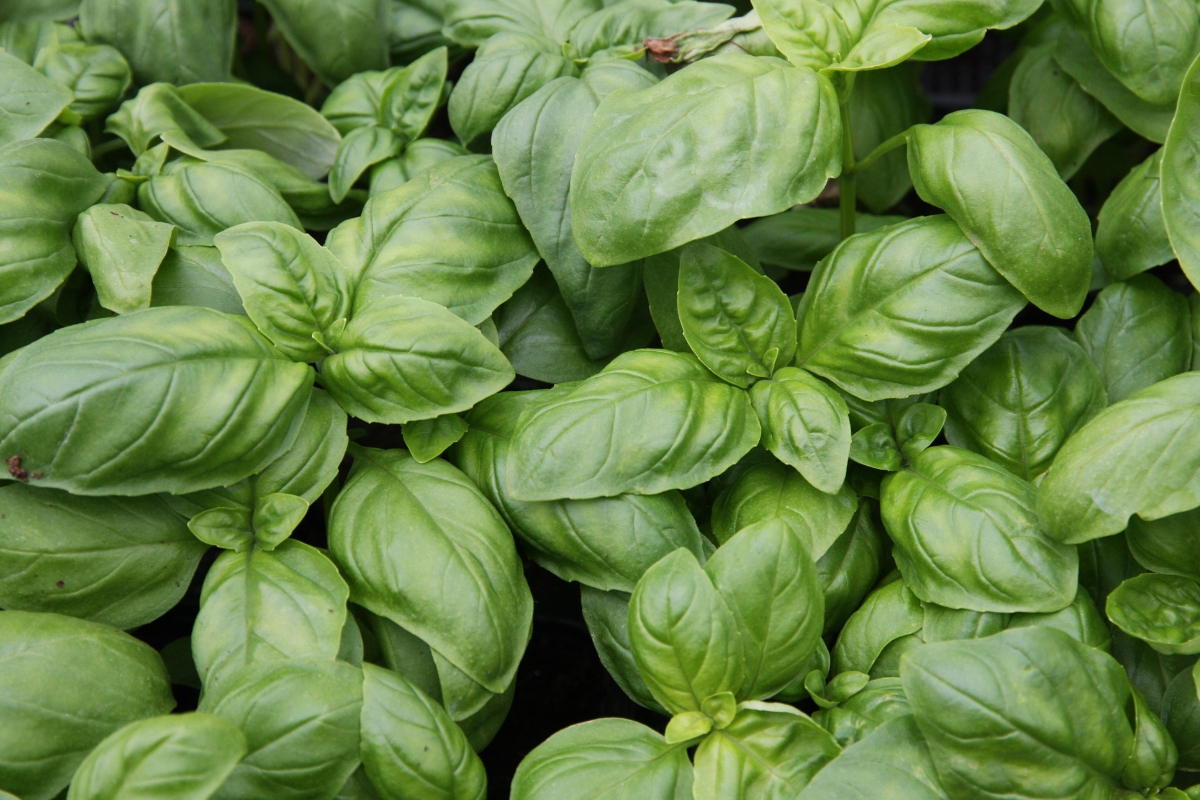
Calendula (Calendula officinalis)
Calendula, a bright and cheerful annual herb, can grow up to 15 inches tall. It is easy to start from seed and can tolerate various soil types, though it prefers well-drained, slightly alkaline soil. Calendula thrives in full sun and is a relatively low-maintenance plant, requiring only regular watering during dry spells.
Its vibrant orange and yellow flowers bloom from early summer to fall, providing a continuous harvest. The flowers themselves are sticky when freshly opened, making them easy to harvest for medicinal use.
Calendula is renowned for its skin-healing properties and is often used topically to treat minor cuts, bruises, burns, and skin irritation. Its anti-inflammatory and antimicrobial effects make it a staple in natural skin-care preparations like salves, creams, and ointments. The dried flowers can be infused into oils for topical use or steeped in hot water for tea.
Calendula is also edible, with its petals brightening up salads, desserts, or as a garnish. Additionally, it can be used in tinctures and is sometimes combined with other herbs for digestive health.
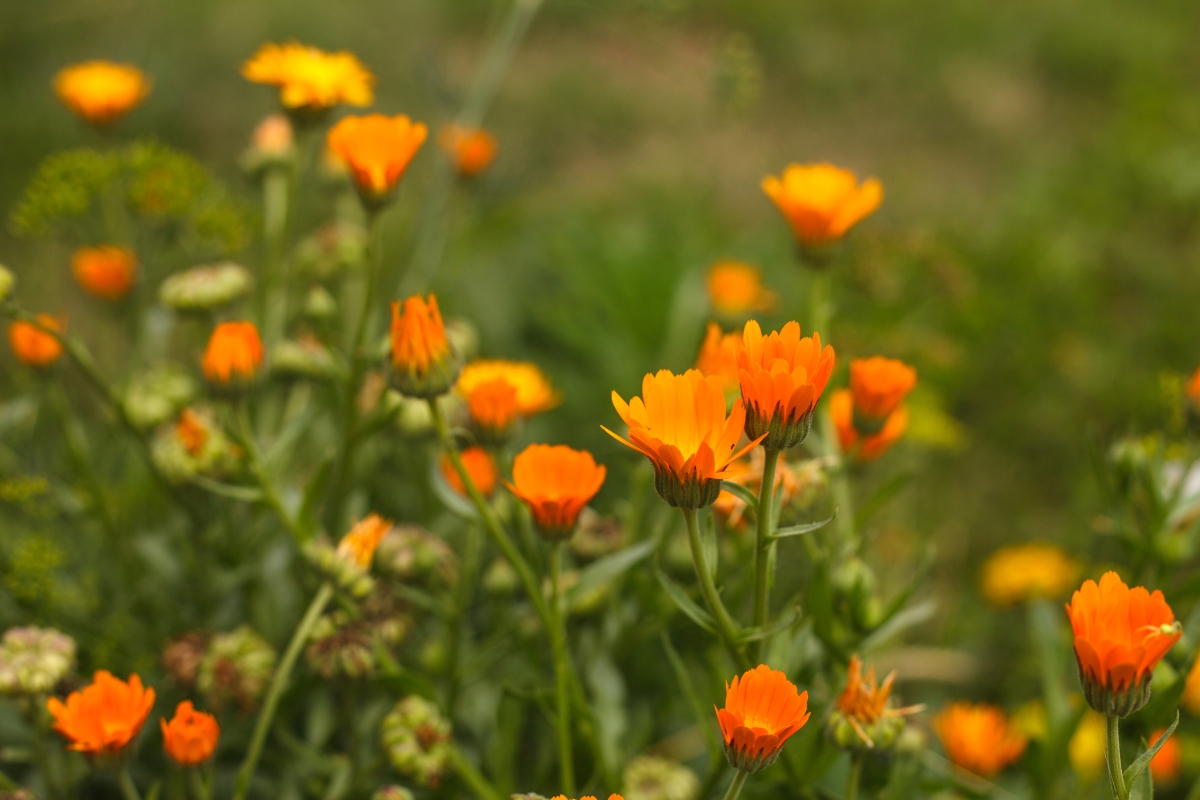
Chamomile (Matricaria chamomilla)
Chamomile is an herbaceous perennial that grows up to 2 feet tall, known for its charming, daisy-like flowers. It prefers full sun but can also tolerate partial shade. Chamomile grows well in light, well-drained soil and does not require rich or overly fertile soil.
The plant is easy to grow from seed, and its seeds germinate quickly, often within two weeks. Chamomile can be sown in the spring or fall, and its flowers are harvested throughout the growing season. Regular harvesting of flowers encourages new blooms and prolongs the growing period.
Chamomile is perhaps best known for its calming effects, making it a popular remedy for insomnia, anxiety, and digestive issues. It is often used in teas to relieve stress and promote relaxation. Chamomile also has mild anti-inflammatory and antiseptic properties, which make it a common ingredient in skin-care products, especially for soothing irritated or sensitive skin.
The flowers can be harvested fresh or dried for teas, tinctures, or skin-care preparations. Chamomile’s mild flavor also makes it an excellent addition to blended herbal teas.
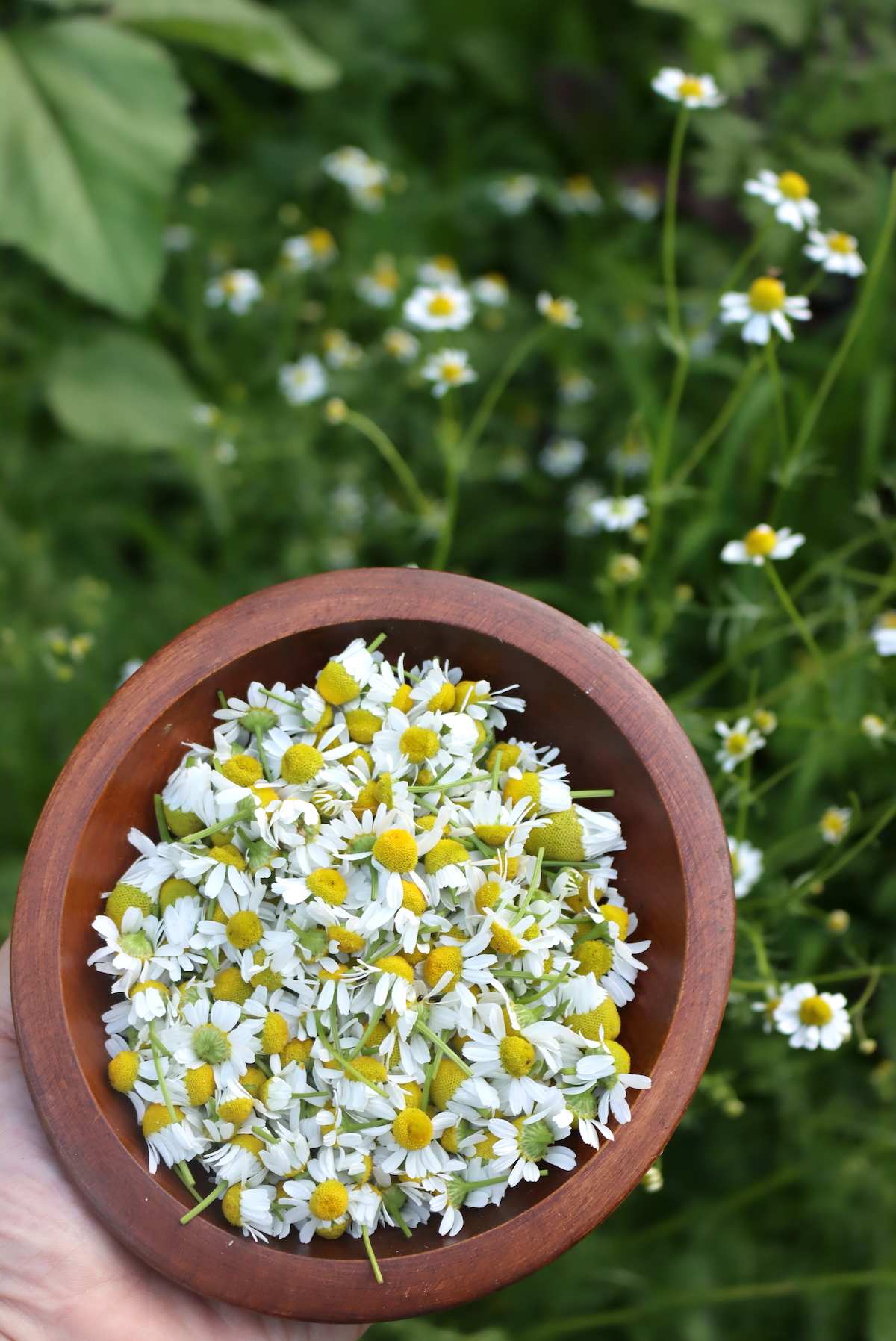
Echinacea (Echinacea spp.)
Echinacea, a striking perennial herb, can grow from 2 to 4 feet tall, depending on the species and variety. It thrives in full sun and prefers well-drained, slightly sandy soil. Echinacea is best started from seed but requires a bit of patience as its seeds can take several weeks to germinate. For better success, the seeds can be cold-stratified before planting.
Once established, Echinacea is a low-maintenance plant, and its beautiful purple coneflowers attract pollinators like bees and butterflies.
Medicinally, Echinacea is most famous for its immune-boosting properties. It is commonly used to prevent or treat colds and upper respiratory infections. Echinacea is believed to stimulate the body’s immune response, making it helpful during cold and flu season. Both the aerial parts (flowers, leaves) and roots of the plant are used in herbal preparations.
Echinacea is most commonly used in tinctures and teas, and the roots can be dried for decoctions. Its flowers can also be used to make a soothing tincture or infused into honey for an immune-boosting treat.
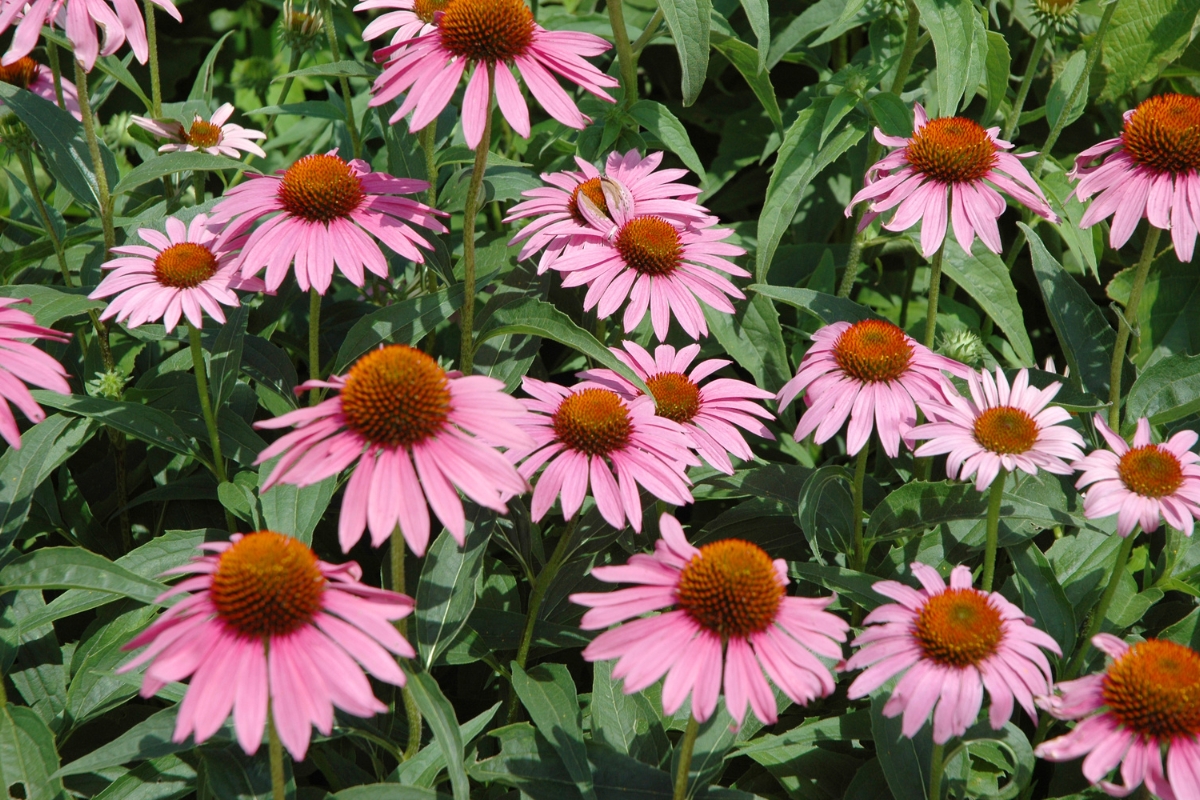
Lavender (Lavandula spp.)
Lavender is a fragrant perennial herb that grows to about 2 feet tall and thrives in full sun and dry, well-drained soil. It is best suited for areas with warm, temperate climates. Lavender does not tolerate heavy, wet soils and benefits from being planted in raised beds or containers with excellent drainage.
Once established, it is a relatively low-maintenance herb and can be propagated from cuttings. It’s a slow-growing plant, but with proper care, it will reward you with an abundance of beautiful flowers that bloom in mid to late summer.
Lavender is widely known for its calming and relaxing properties, making it a favorite herb for treating anxiety, insomnia, and stress. Its soothing aroma is often used in aromatherapy to promote relaxation and mental clarity. Lavender’s flowers and stems are frequently used in herbal preparations such as oils, tinctures, and honeys.
Lavender is also a popular ingredient in skin-care products for its anti-inflammatory and antiseptic qualities. The dried flowers are often used in sachets, or they can be infused in oils for massage or added to teas for relaxation.
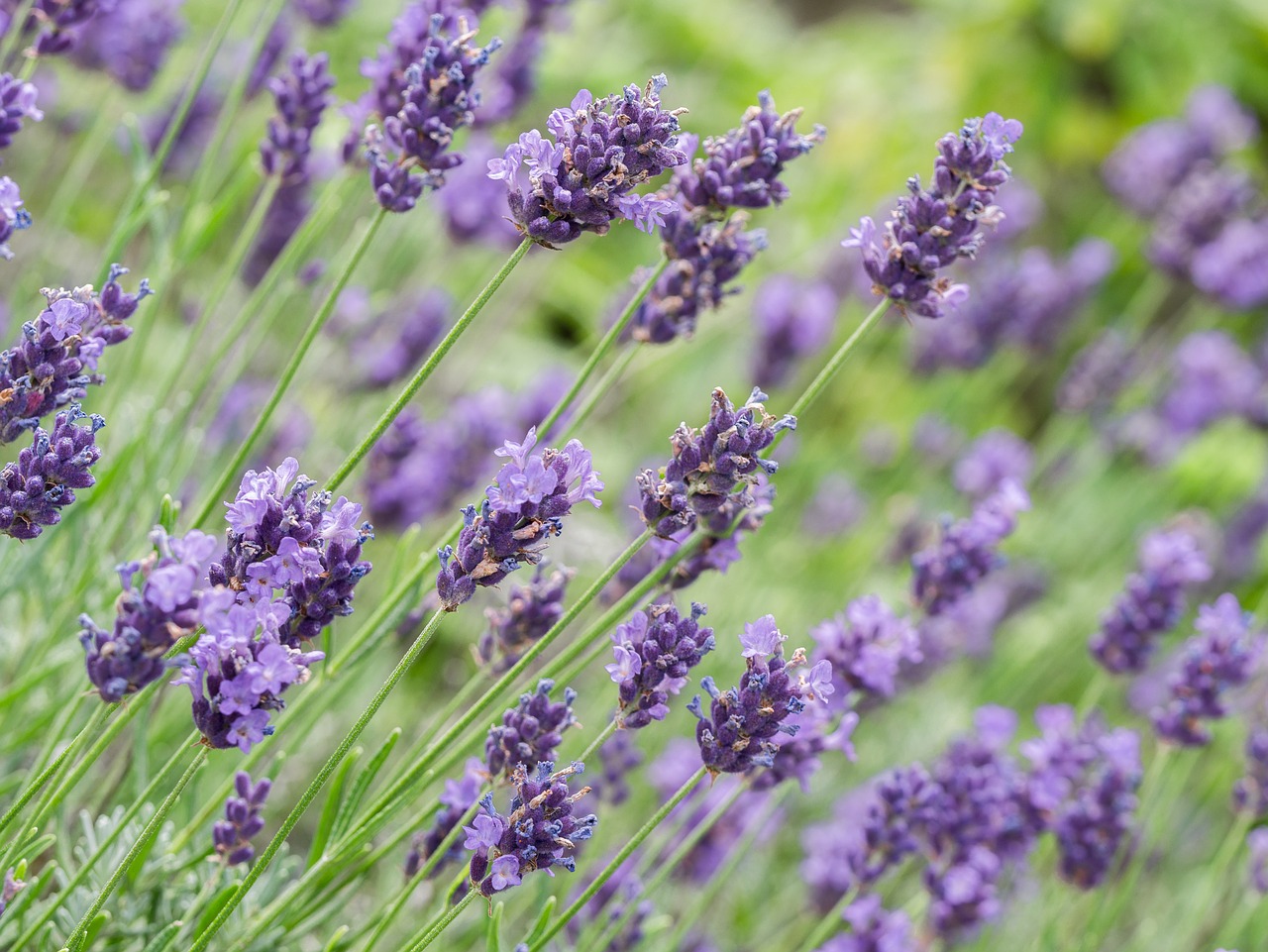
Lemon Balm (Melissa officinalis)
Lemon balm is a fast-growing perennial herb that can spread rapidly in favorable conditions. It typically grows to about 2 feet in height and prefers well-drained, slightly acidic soil. It thrives in both full sun and partial shade, making it versatile for different garden environments.
Lemon balm does well in containers, especially to prevent it from becoming invasive. Its fresh, lemony scent and flavor make it an easy herb to grow and enjoy, and it can be harvested continuously throughout the growing season.
Lemon balm is known for its calming and soothing properties, making it an excellent choice for treating anxiety, stress, and insomnia. It is also commonly used to aid digestion, relieve headaches, and support the immune system.
The fresh or dried leaves are most often used in teas, which help to promote relaxation and reduce tension. Lemon balm can also be used in tinctures, syrups, and honey infusions. Its mild flavor is perfect for adding to salads, desserts, and baked goods, making it both a medicinal and culinary favorite.
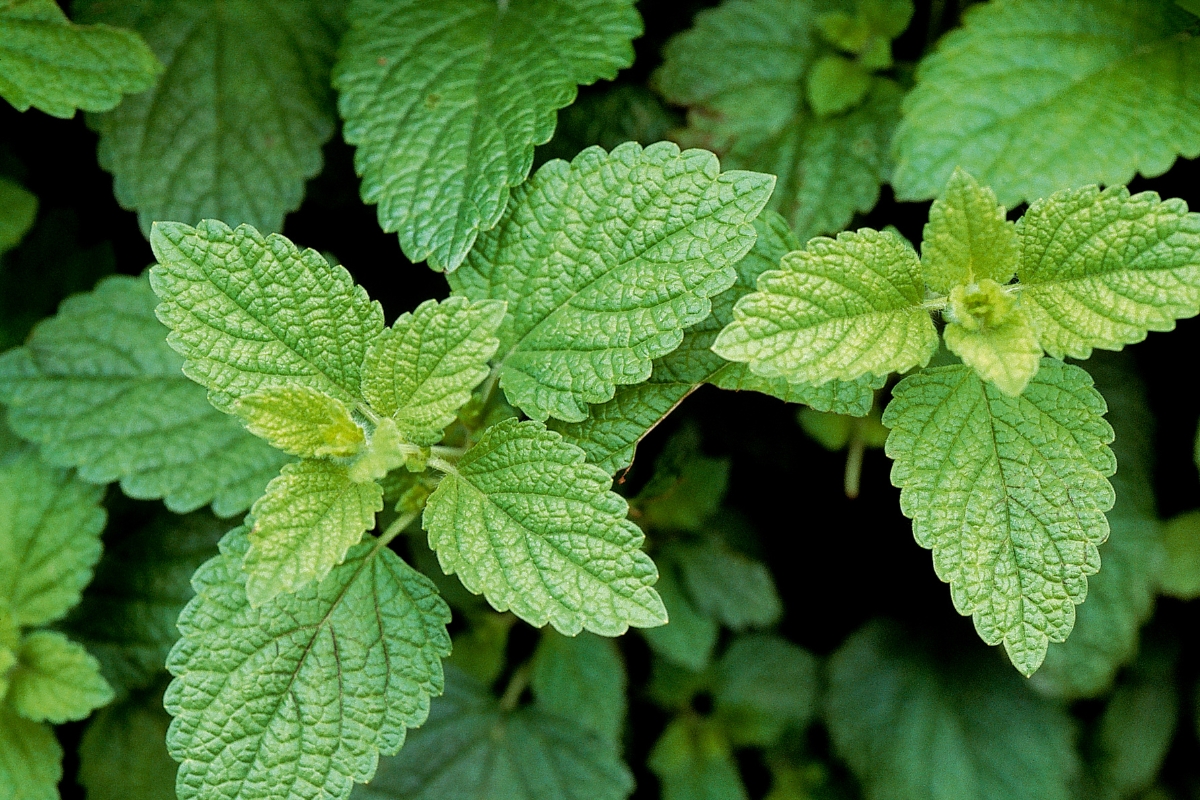
Oregano (Origanum vulgare)
Oregano is a hardy perennial herb known for its robust flavor and aroma, making it a favorite in Mediterranean and Italian cuisine. It grows to about 12 to 18 inches in height and thrives in full sun and well-drained soil. Oregano is very drought-tolerant once established, and it can even tolerate poor soil conditions, though it will grow best in slightly alkaline soil.
This herb spreads rapidly through underground runners, so it can quickly become a ground cover if left unchecked. Regular harvesting encourages bushier growth, and it can easily be grown in containers to keep its spread under control.
Medicinally, oregano is prized for its antimicrobial, antioxidant, and anti-inflammatory properties. It is commonly used to relieve symptoms of respiratory infections, such as coughs and sore throats, and has been traditionally used as a digestive aid.
Oregano oil is a potent remedy often used topically for its antibacterial and antiviral properties.
The leaves can also be made into a tea, which is commonly consumed for its soothing effects on the throat and digestive tract. In addition, oregano is an excellent culinary herb, especially for sauces, roasted vegetables, and meats.
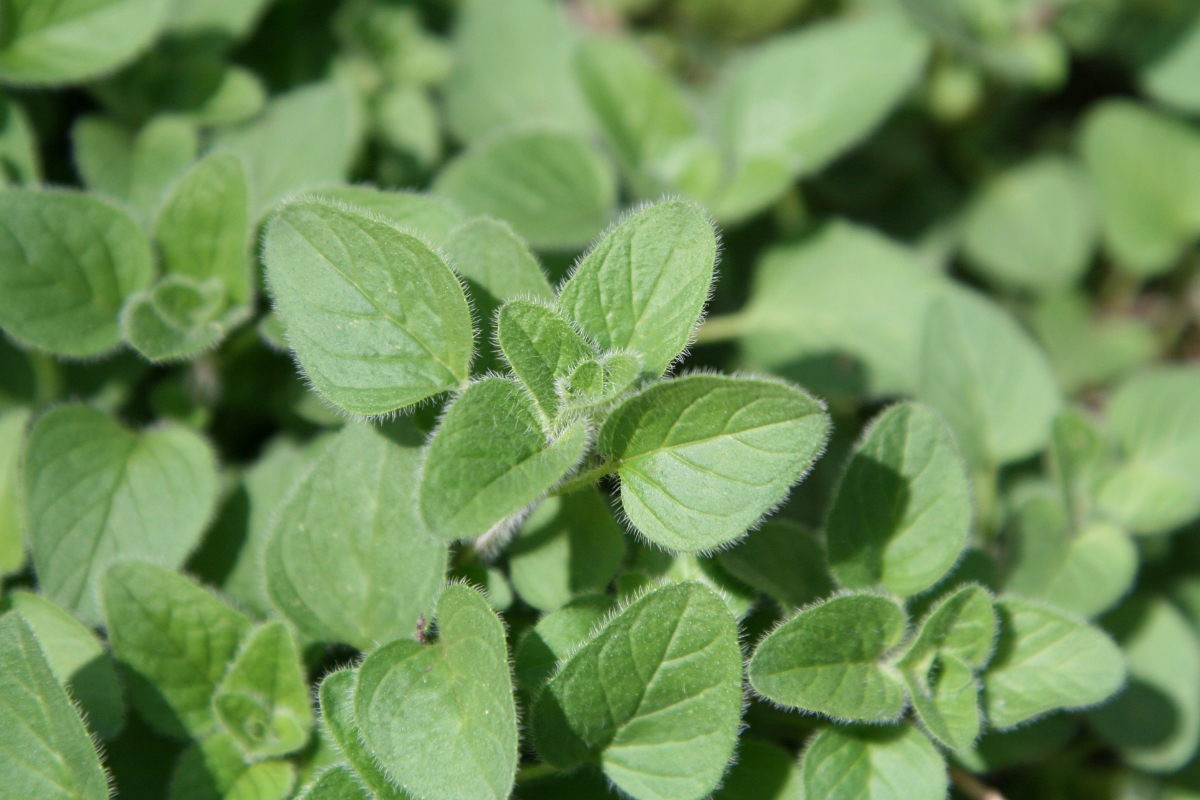
Parsley (Petroselinum crispum)
Parsley is a biennial herb often grown as an annual, and it’s known for its bright, fresh flavor. It grows to about 8 to 12 inches tall, and it thrives in both full sun and partial shade, making it ideal for gardens with varying light conditions. Parsley prefers rich, moist, well-drained soil and can tolerate a range of soil types, though it does best in slightly acidic or neutral pH levels.
This herb can be grown in pots, containers, or directly in the garden, and it is a great companion plant for many other vegetables and herbs. Parsley also grows well in cooler climates, making it a perfect herb to plant early in the growing season.
Parsley is well-known for its high vitamin C and iron content, and it is often used in herbal medicine for its detoxifying and diuretic effects. It has also been used traditionally to relieve bloating, indigestion, and to support kidney health.
Parsley is rich in antioxidants and is sometimes used in topical preparations to soothe skin irritations or reduce puffiness under the eyes. The leaves can be harvested and used fresh in a variety of dishes, from salads to sauces, or dried for use in teas and tinctures. Parsley can also be made into a refreshing herbal infusion or added to culinary dishes like tabbouleh, soups, and smoothies.
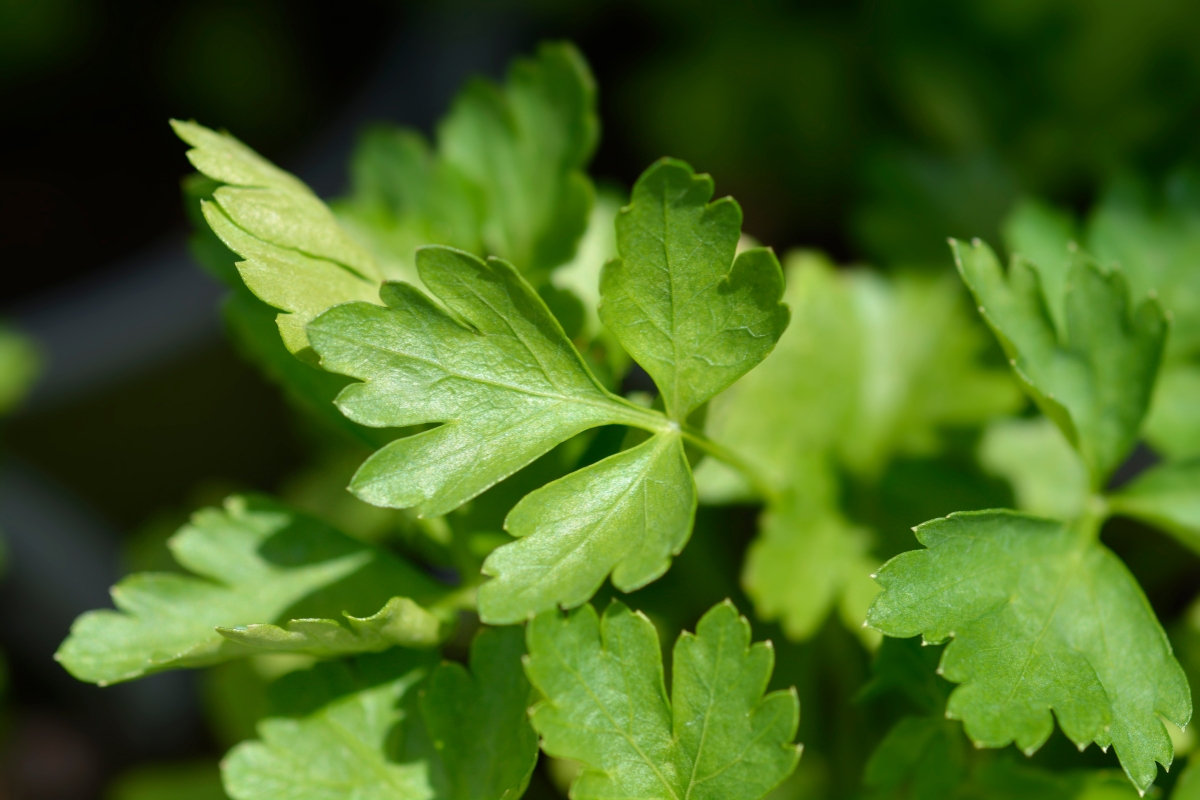
Peppermint (Mentha x piperita)
Peppermint is a vigorous perennial that grows to about 2 feet tall. It thrives in full sun or partial shade and prefers moist, rich soil. However, peppermint can be quite invasive in garden beds, spreading rapidly through its underground runners.
It’s often grown in containers or confined garden beds to prevent it from overtaking other plants. It is a hardy plant that grows quickly and can be harvested multiple times during the growing season. Its fragrant leaves are aromatic and flavorful, making it a popular choice for herbal remedies and culinary uses.
Peppermint is most commonly used to treat digestive issues such as indigestion, bloating, and nausea. It is also effective for alleviating headaches, relieving tension, and easing symptoms of the common cold. The leaves are often used fresh in culinary dishes, but they can also be dried for herbal teas, tinctures, and oils.
Peppermint can be used in salves for topical relief of muscle aches or skin irritation. Its refreshing flavor makes it a favorite in teas, candies, and even infused in honey for added medicinal benefits.
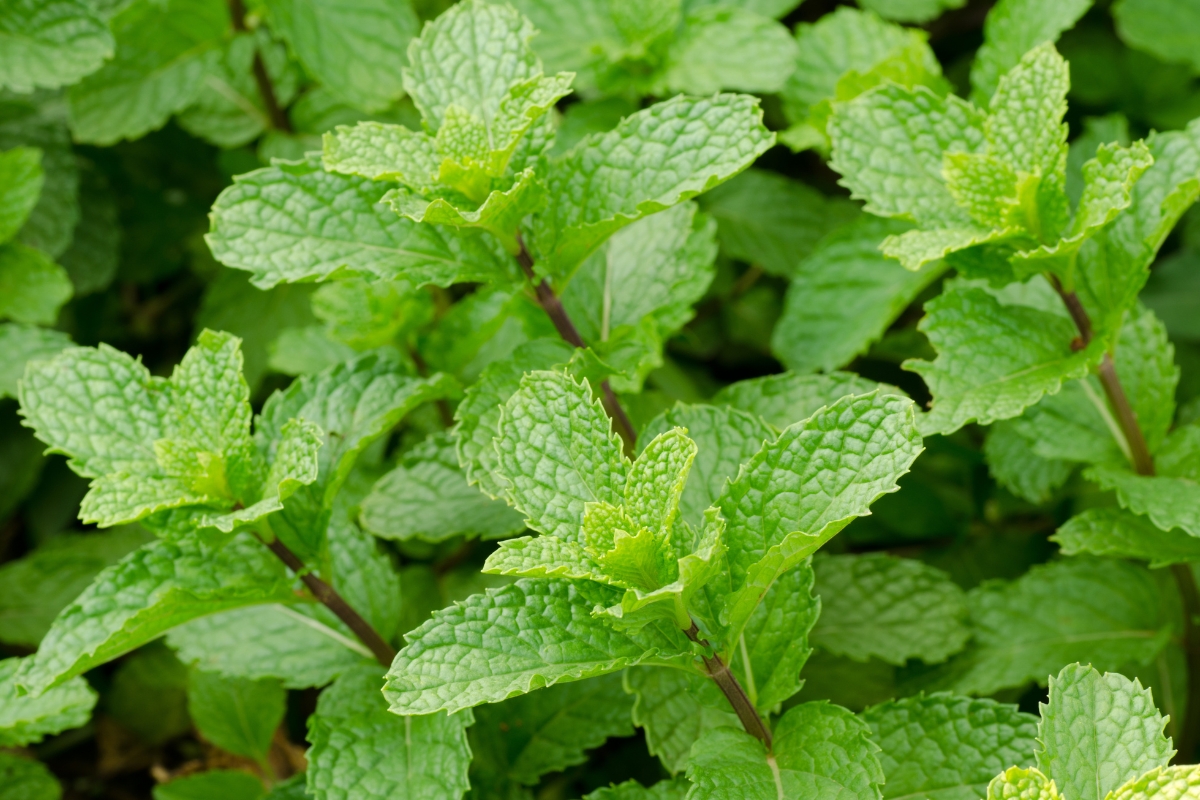
Sage (Salvia officinalis)
Sage is a hardy perennial herb that can grow up to 2 feet tall. It prefers dry, well-drained soil and full sun, though it can tolerate some light shade. Sage is easy to grow and typically requires minimal care, making it ideal for beginners. It is often grown in garden beds, containers, or raised beds, as it needs good air circulation and does not like overly wet conditions.
This drought-tolerant herb grows best in nutrient-poor soils, making it an excellent option for areas with less fertile ground. We planted ours in a rock garden near our front door, and we can harvest the leaves all winter long (even here in Vermont).
Sage is a well-known herb for its antibacterial and anti-inflammatory properties. It is commonly used for throat and digestive health, particularly for sore throats, coughs, and indigestion.
It is frequently used in teas, tinctures, or infused oils, and its leaves are often used fresh in culinary dishes. Sage is also utilized in mouthwashes and gargles for oral health.
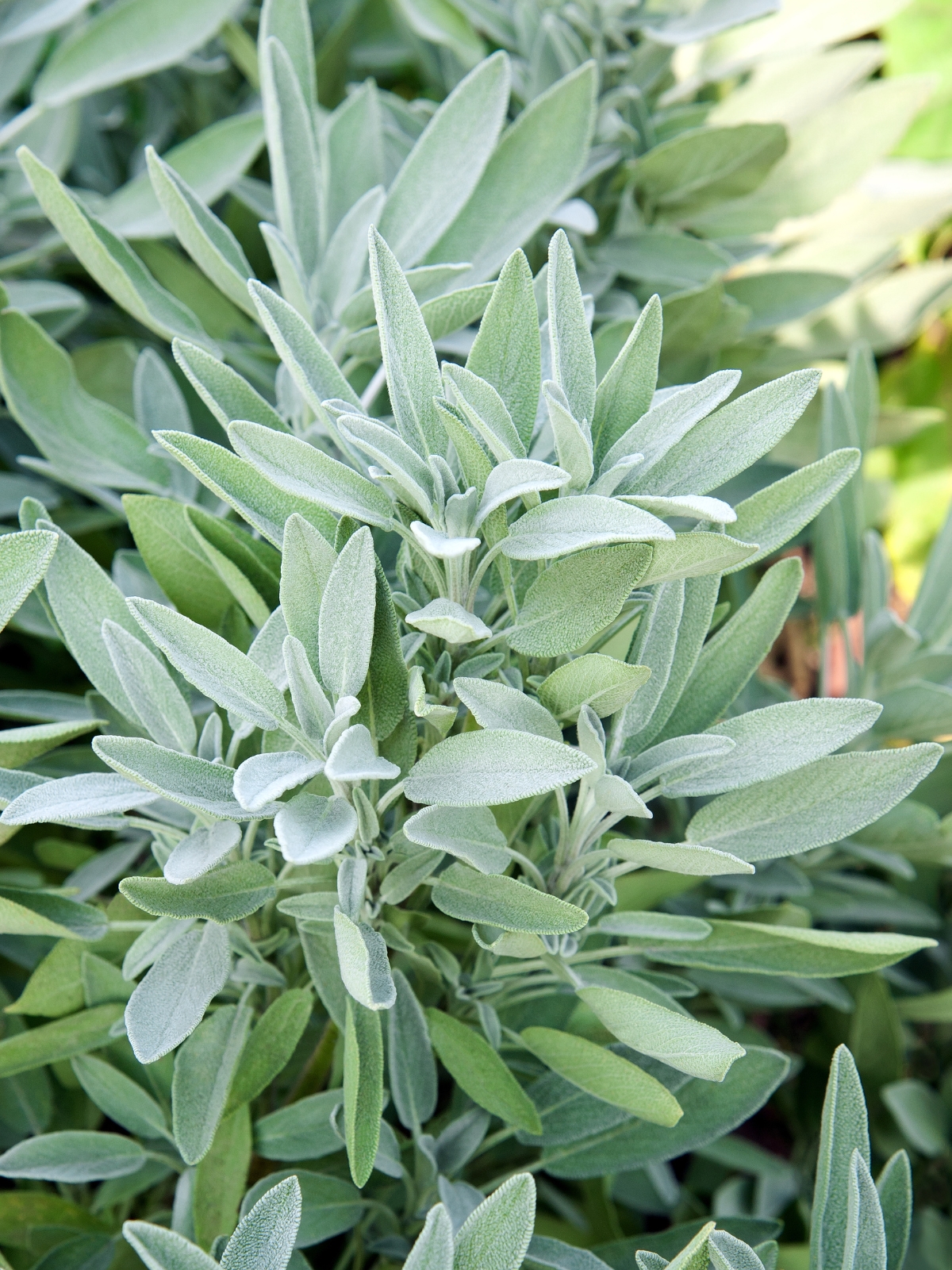
Thyme (Thymus vulgaris)
Thyme is a low-growing, woody perennial herb that typically reaches about 6 to 12 inches in height. It thrives in sunny, well-drained soil and is highly tolerant of dry conditions once established.
It does not require rich, fertile soil but prefers slightly alkaline conditions. This herb is an excellent choice for gardeners with poor or rocky soil, as it will flourish with minimal care.
Thyme is often grown as ground cover or in herb gardens, and it can also be cultivated in containers. Regular pruning encourages dense growth and prevents the plant from becoming woody.
Thyme has a wide range of medicinal uses, particularly for its antibacterial, antiviral, and antimicrobial properties. It is commonly used to treat respiratory ailments such as coughs, colds, and bronchitis. Thyme also has a long history of use for digestive issues and to relieve symptoms of indigestion and bloating.
The leaves and flowers are typically used in teas, tinctures, or infused in oils for topical application. It can also be used in steam inhalations to clear respiratory passages or as a mouthwash for oral hygiene. Thyme’s strong, savory flavor also makes it a popular culinary herb, often used in soups, stews, and marinades.
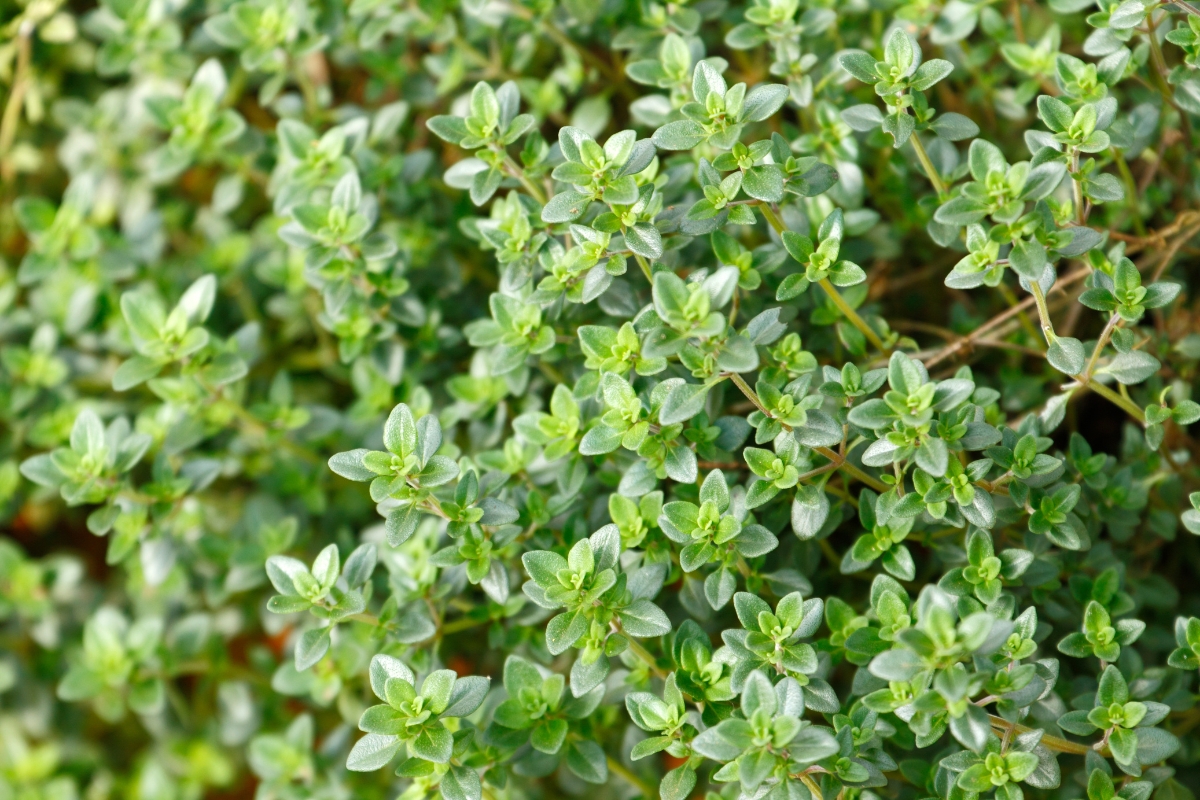
Herb Gardening Tips for Beginners
Starting an herb garden can be a rewarding and enjoyable way to connect with nature and grow your own flavorful plants. Whether you have a small space or a larger plot, here are some essential tips to help you get started:
- Know Your Hardiness Zone: Check the USDA plant hardiness zone map to select herbs suited for your climate. Some areas may have microclimates that allow for better growth of certain plants, so take advantage of these unique spots in your garden for the best results.
- Watering Wisely: Water your herbs in the early morning when temperatures are cooler and evaporation is lower. If you live in a hot, dry climate, evening watering might be more effective. Avoid watering at night in humid climates to prevent fungal growth.
- Soil Drainage: Most herbs prefer well-drained soil. Use pots with drainage holes, and if you’re planting in the ground, consider adding sand or compost to improve drainage.
- Soil Nourishment: Keep your herbs healthy by using organic fertilizers like compost or kelp meal. Avoid chemical herbicides, as many weeds can be useful in herbal remedies.
- Location Matters: Herbs need at least 6 hours of sunlight a day. If you’re planting in a shaded area, opt for herbs like mint or lemon balm that can tolerate less light.
By following these beginner-friendly tips, you’ll be well on your way to cultivating a thriving and useful herb garden!
